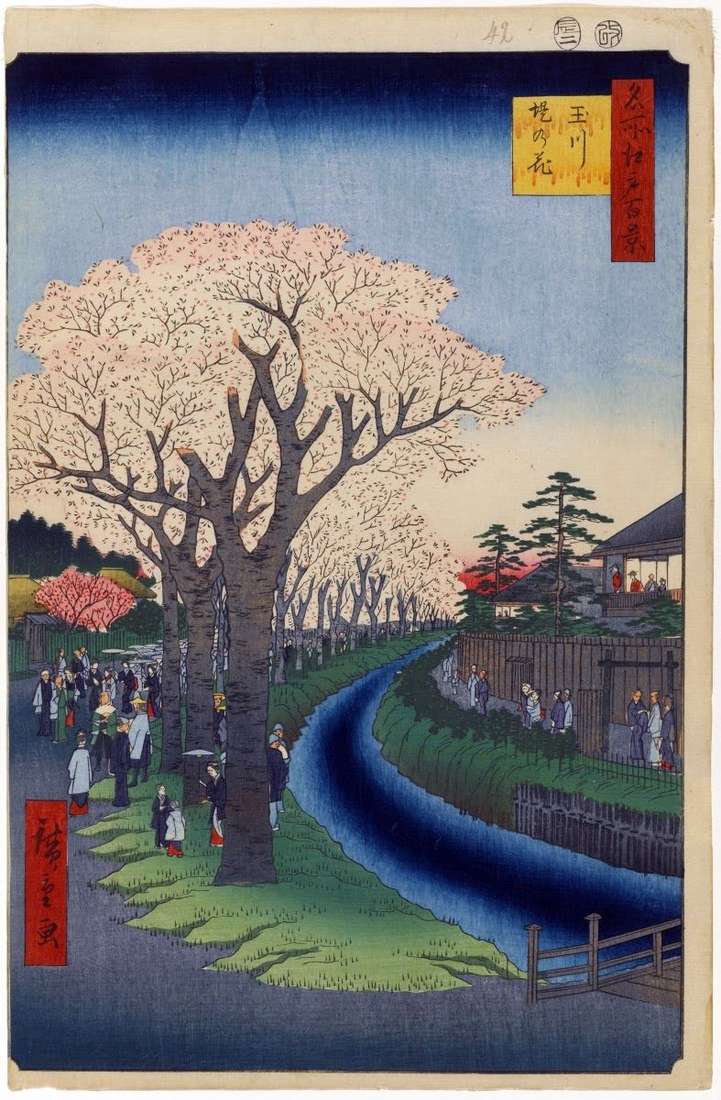
Hiroshige portrayed the western outskirts of the capital, the Shinjuku district and the Tamakawa thirty-kilometer canal, which was built to supply Edo with drinking water. In this engraving is shown the place of Etsuya Okido, where the channel ends. From here, water will flow through wooden and stone pipes in different directions. Along the banks of the canal were the daimyo possessions, on the left side of the sheet you can see the entrance to the Naito-yasiki – the estate of the genus Knighto. Shinjuku was part of the Koshu-Kaido road, leading from Edo in the province of Kai and Sinano.
At the end of the XVII century there were inns and entertainment places. Gradually the area of Naito-Shinjuku turned into one of the busiest in Edo, famous for its restaurants and tea houses. Hiroshige portrayed one of the establishments on the right bank of the canal. Through the open shoji, you can see three female servants in red kimonos. These places were also known for their sakura trees, which grew here not only for beauty, but also for strengthening the dam. As in some other sheets of the late version of the series, in this engraving the overall color structure becomes intense. Concealed in the shadows, the colors of many details pass from the dark blue to the dark gray, almost black.
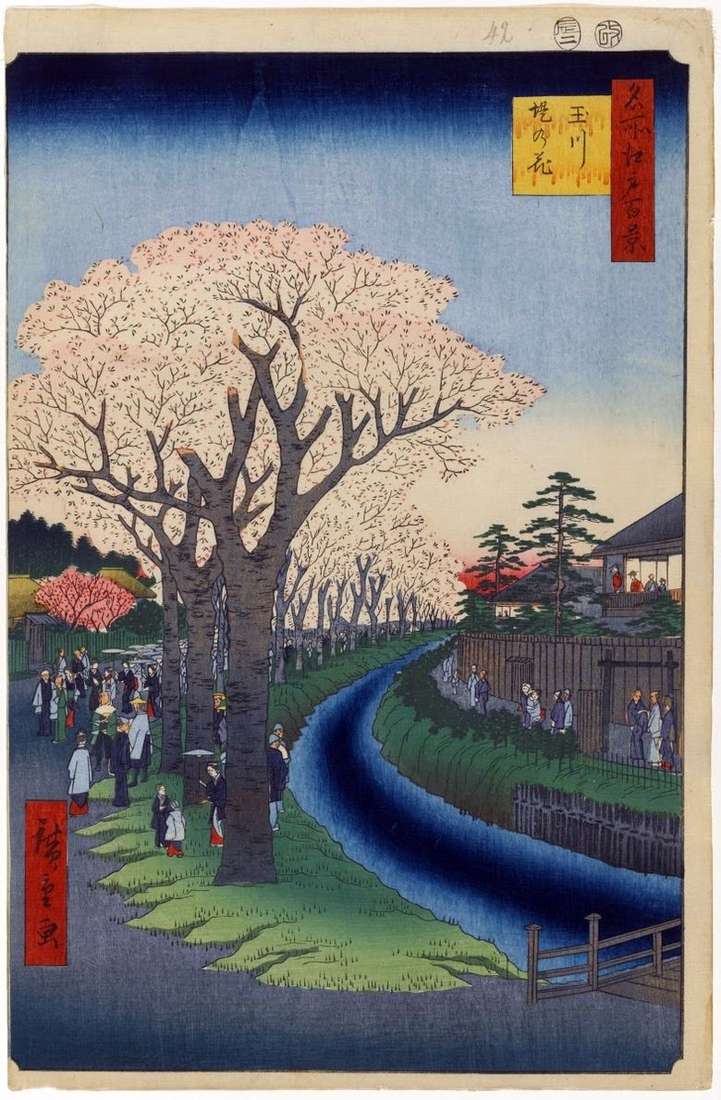 Árboles de Sakura a lo largo de la presa del río Tamagawa – Utagawa Hiroshige
Árboles de Sakura a lo largo de la presa del río Tamagawa – Utagawa Hiroshige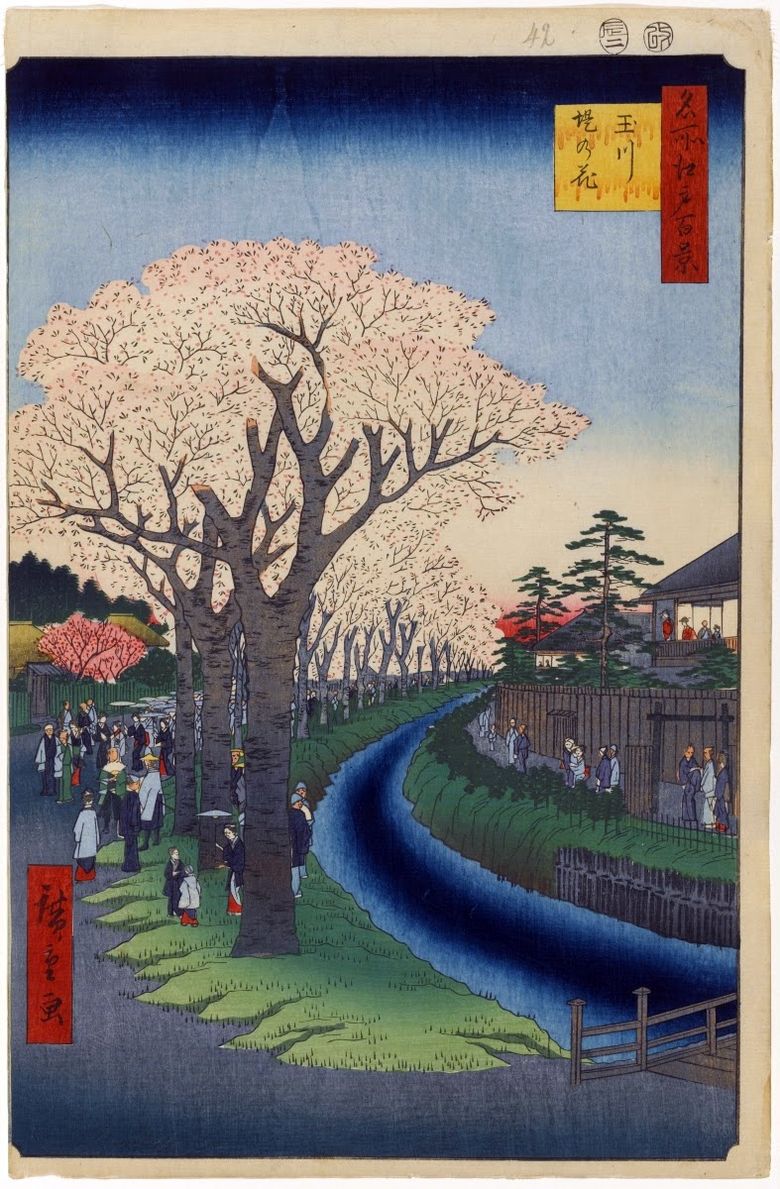 Arbres de Sakura le long du barrage de la rivière Tamagawa – Utagawa Hiroshige
Arbres de Sakura le long du barrage de la rivière Tamagawa – Utagawa Hiroshige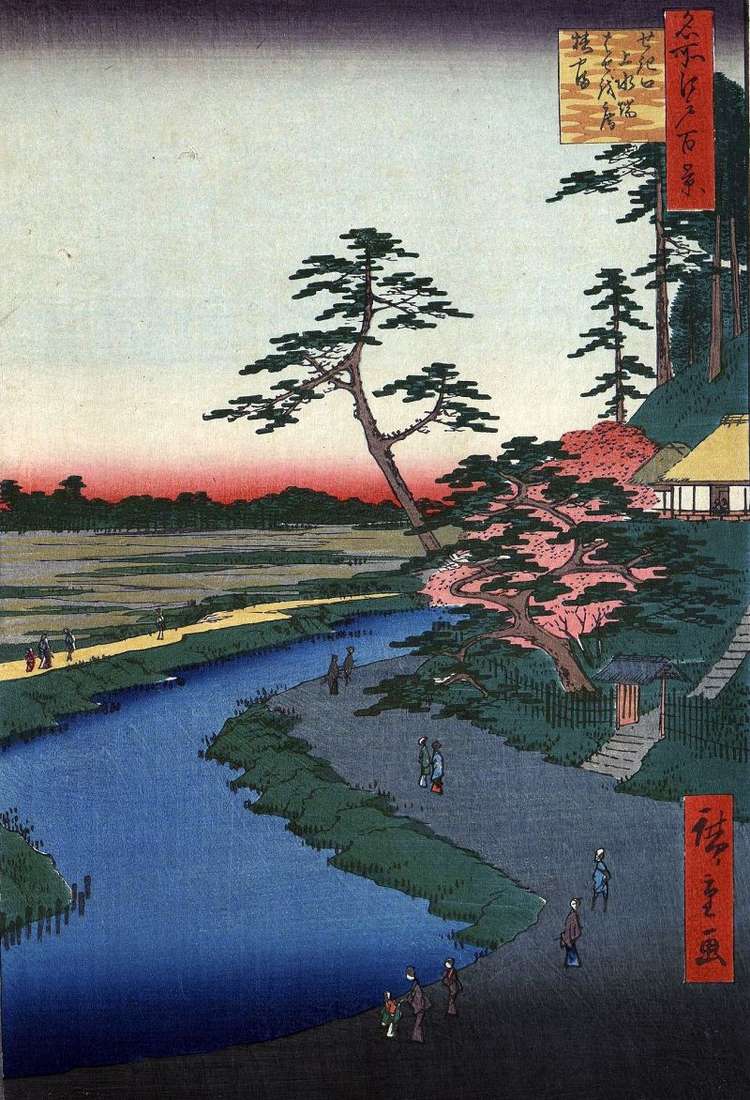 Hut &; “Bassein on Mount Tsubakiyama near the aqueduct in the Sekiguchi district by Utagawa Hiroshige
Hut &; “Bassein on Mount Tsubakiyama near the aqueduct in the Sekiguchi district by Utagawa Hiroshige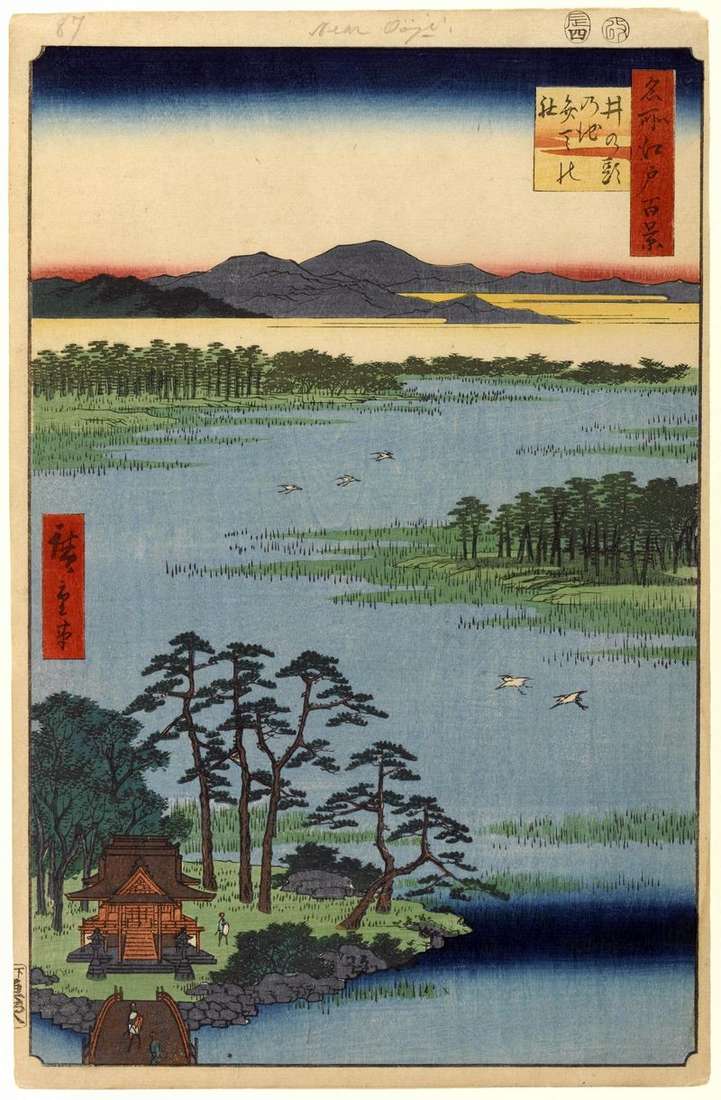 Sanctuary of Benten on the pond of Inokasira no Ike by Utagawa Hiroshige
Sanctuary of Benten on the pond of Inokasira no Ike by Utagawa Hiroshige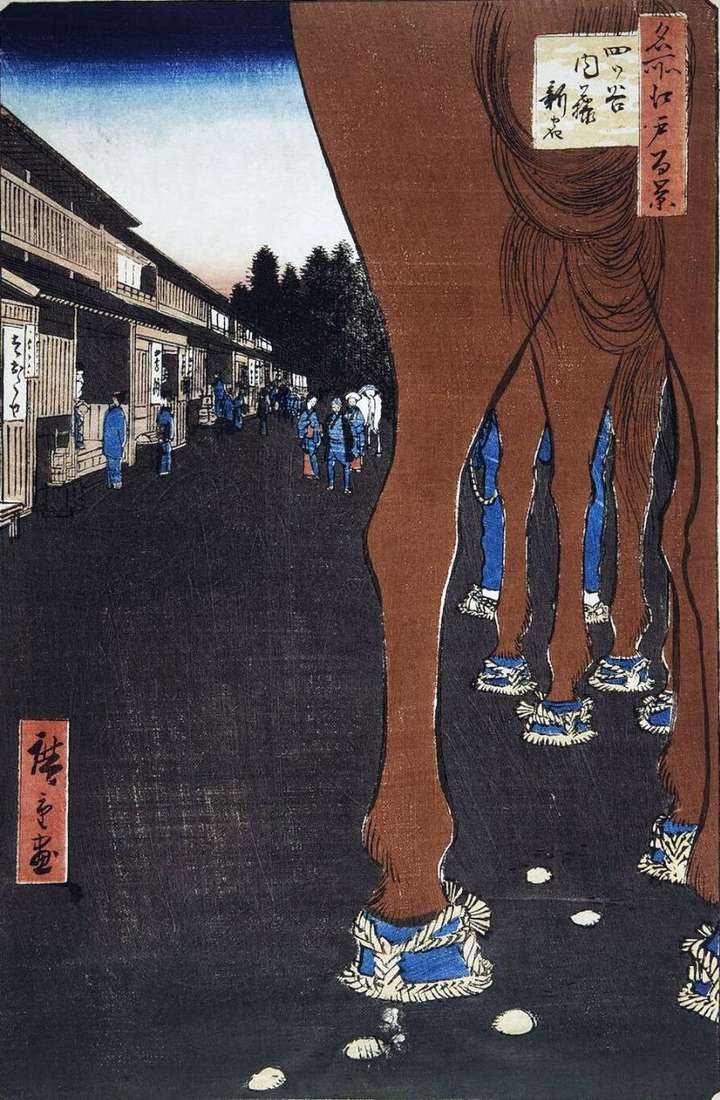 Naito-Shinjuku in Yeatsu by Utagawa Hiroshige
Naito-Shinjuku in Yeatsu by Utagawa Hiroshige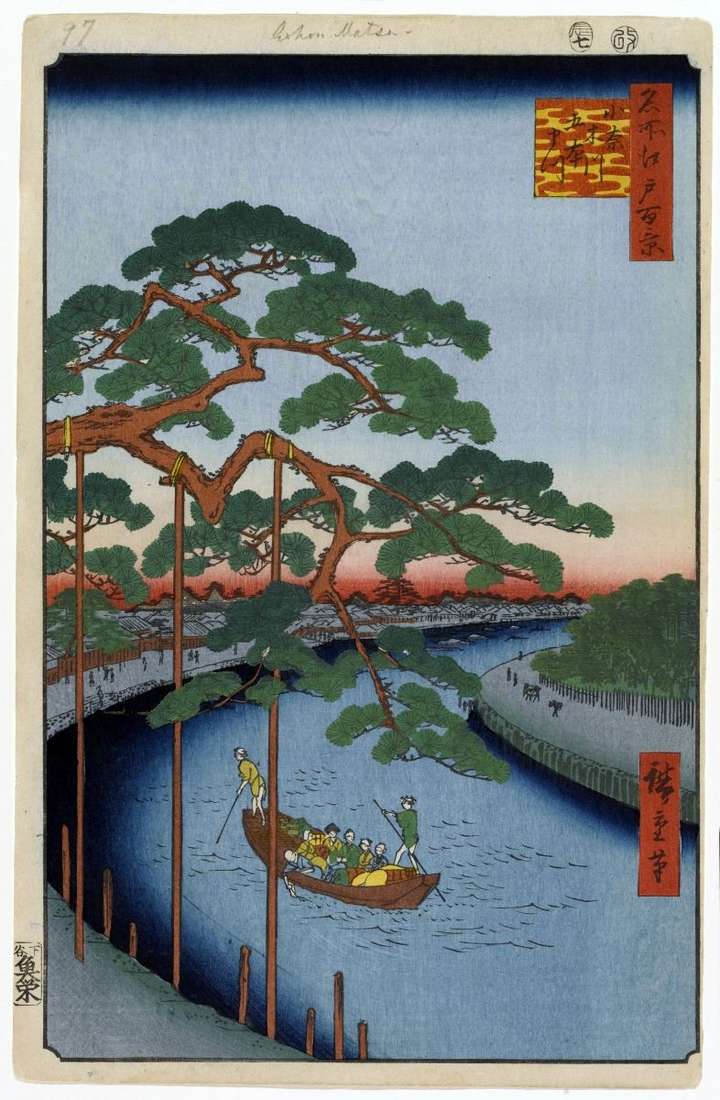 Pine Goyhonmatsu on the Onagigawa Canal by Utagawa Hiroshige
Pine Goyhonmatsu on the Onagigawa Canal by Utagawa Hiroshige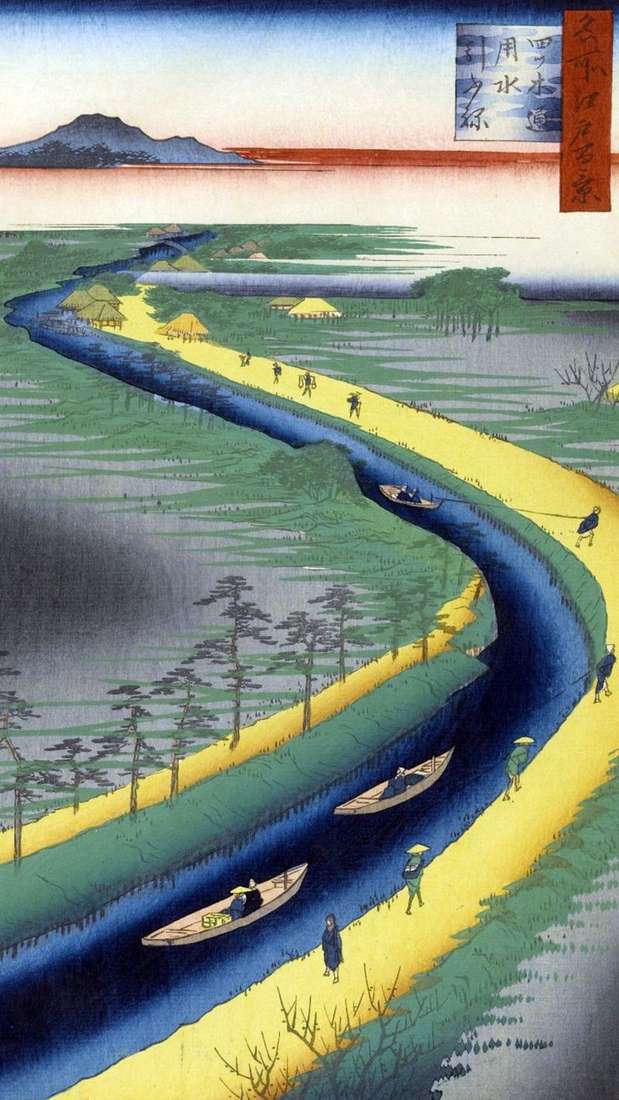 Tugboats on the Etsugi-Dori Canal by Utagawa Hiroshige
Tugboats on the Etsugi-Dori Canal by Utagawa Hiroshige Dam on the Otonasigawa River in Ojzi by Utagawa Hiroshige
Dam on the Otonasigawa River in Ojzi by Utagawa Hiroshige